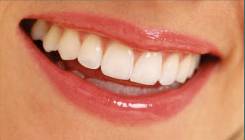What Is the Right Way to Brush?
Proper brushing takes at least two minutes — that's right, 120 seconds! Most adults do not come close to brushing that long. To get a feel for the time involved, try using a stopwatch. To properly brush your teeth, use short, gentle strokes, paying extra attention to the gumline, hard-to-reach back teeth and areas around fillings, crowns or other restoration. Concentrate on thoroughly cleaning each section as follows:
- Clean the outer surfaces of your upper teeth, then your lower teeth
- Clean the inner surfaces of your upper teeth, then your lower teeth
- Clean the chewing surfaces
- For fresher breath, be sure to brush your tongue, too
Tilt the brush at a 45° angle against the gumline and sweep or roll the brush away from the gumline. Gently brush the outside, inside and chewing surface of each tooth using short back-and-forth strokes. Gently brush your tongue to remove bacteria and freshen breath.
What Type of Toothbrush Should I Use?
Most dental professionals agree that a soft-bristled brush is best for removing plaque and debris from your teeth. Small-headed brushes are also preferable, since they can better reach all areas of the mouth, including hard-to-reach back teeth. For many, a powered toothbrush is a good alternative. It can do a better job of cleaning teeth, particularly for those who have difficulty brushing or who have limited manual dexterity. To find the right Colgate toothbrush for you, click here.
How Important is the Toothpaste I Use?
It is important that you use a toothpaste that's right for you. Today there is a wide variety of toothpaste designed for many conditions, including cavities, gingivitis, tartar, stained teeth and sensitivity. Ask your dentist or dental hygienist which toothpaste is right for you. To find the right Colgate toothpaste for you, click here.
ow Often Should I Replace My Toothbrush?
You should replace your toothbrush when it begins to show wear, or every three months, whichever comes first. It is also very important to change toothbrushes after you've had a cold, since the bristles can collect germs that can lead to reinfection
Proper Tooth Brushing Technique
Proper brushing is essential for cleaning teeth and gums effectively. Use a toothbrush with soft, nylon, round-ended bristles that will not scratch and irritate teeth or damage gums.
| Place bristles along the gumline at a 45-degree angle. Bristles should contact both the tooth surface and the gumline. |  |
| Gently brush the outer tooth surfaces of 2-3 teeth using a vibrating back & forth rolling motion. Move brush to the next group of 2-3 teeth and repeat. |  |
| Maintain a 45-degree angle with bristles contacting the tooth surface and gumline. Gently brush using back, forth, and rolling motion along all of the inner tooth surfaces. |  |
| Tilt brush vertically behind the front teeth. Make several up & down strokes using the front half of the brush. |  |
| Place the brush against the biting surface of the teeth & use a gentle back & forth scrubbing motion. Brush the tongue from back to front to remove odor-producing bacteria. |  |











